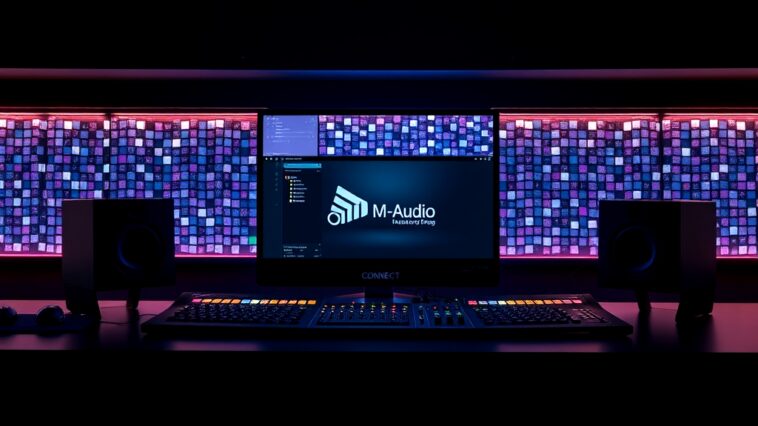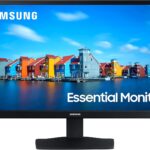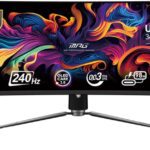If you’ve recently invested in M-Audio monitors, you might be asking yourself, “Can you connect M-Audio monitors to PC?” The answer is a resounding yes! Setting up your monitors can be straightforward, and this guide will walk you through everything you need to know to get the best sound quality from your system.
Why Choose M-Audio Monitors?
Before diving into the connection process, let’s briefly explore why M-Audio monitors are a preferred choice for many musicians, producers, and gamers. These monitors are designed to deliver accurate sound reproduction, which is essential for mixing tracks or enjoying immersive gaming experiences. Their build quality and sound clarity make them a great addition to any setup.
How to Connect M-Audio Monitors to PC for Optimal Sound Quality
Step 1: Gather Your Equipment
To get started, you’ll need:
- Your M-Audio monitors
- A PC or laptop
- Appropriate cables (either TRS, RCA, or XLR, depending on your monitors and audio interface)
- An audio interface (optional but recommended for optimal sound)
Step 2: Identify Connection Ports
First, take a close look at your monitors and PC. Most M-Audio monitors come with multiple input options:
- TRS (Tip-Ring-Sleeve): Balanced 1/4-inch input.
- RCA: Unbalanced input often found in consumer audio equipment.
- XLR: Balanced input commonly used in professional audio setups.
Check your PC for output options. Most PCs will have a 3.5mm headphone jack, while laptops may also have USB ports.
Step 3: Choosing the Best Audio Interface
If you’re serious about sound quality, consider investing in the best audio interface for connecting M-Audio monitors to a computer. An audio interface helps in converting digital audio signals to analog so that your monitors can play them back clearly.
Look for interfaces that offer multiple outputs, which allows you to connect more than one monitor. Popular choices include:
- Focusrite Scarlett series
- PreSonus AudioBox
- Behringer UMC series
Step 4: Connecting Your Monitors
Now it’s time to connect everything. If you’re using an audio interface, follow these steps:
- Connect the audio interface to your PC via USB.
- Use TRS or XLR cables to connect your M-Audio monitors to the outputs on the interface.
- If you’re connecting without an interface, use a TRS or RCA cable to connect your monitor to the headphone jack on your PC.
Step 5: Configuring Sound Settings
Once you’ve made the connections, you need to configure your sound settings:
- Go to your PC’s Sound Settings.
- Under the Playback tab, find your monitors (they may be listed as your audio interface).
- Set them as the default device.
Now you’re ready to enjoy your M-Audio monitors!
Troubleshooting M-Audio Monitors Connection Issues with PC
Sometimes, things might not work as smoothly as expected. Here are some common issues and how to troubleshoot them:
- No Sound: Check connections and ensure your monitors are powered. Verify that they are selected as the output device in your sound settings.
- Distorted Sound: This can happen if your monitors are set too loud or if you’re using the wrong cables. Lower the volume and check your cable connections.
- Latency Issues: If you notice delays in sound, this could be due to your audio interface settings. Optimize your buffer size in your audio software.
Recommended Cables for Connecting M-Audio Monitors to Desktop Computer
Choosing the right cables is vital for maintaining sound quality. Here are some recommended cables:
- TRS Cables: Ideal for balanced connections, minimizing noise.
- XLR Cables: Best for professional setups, often used in studios.
- RCA Cables: Good for consumer setups, but be cautious of potential noise interference.
Setting Up M-Audio Monitors with a PC for Music Production
If you’re using your M-Audio monitors for music production, you can follow these steps to enhance your setup:
- Choose a Digital Audio Workstation (DAW): Software like Ableton Live, FL Studio, or Pro Tools can help you produce music effectively.
- Configure Your DAW: Ensure your DAW recognizes the audio interface. This usually involves going into the settings and selecting your audio interface as the input/output device.
- Create a Template: Set up tracks for recording, mixing, and editing. This will save you time in future sessions.
Connecting M-Audio Speakers to PC for Gaming and Multimedia
For gamers and multimedia enthusiasts, the process is similar.
- Connect your monitors to your PC as described above.
- Adjust your audio settings to ensure immersive sound during gameplay or while watching movies.
Using M-Audio monitors can significantly enhance your audio experience, bringing clarity and depth to your games or media.
M-Audio Monitor Setup Tips for Windows PCs
Here are some tips to ensure your M-Audio monitors perform at their best:
- Positioning: Place your monitors at ear level and form an equilateral triangle with your listening position to achieve the best soundstage.
- Isolation Pads: Use pads to reduce vibrations and improve sound quality.
- Calibration: Spend some time calibrating your monitors using a measurement microphone and software to achieve optimal sound in your room.
Using USB Audio Interface to Connect M-Audio Monitors to PC
Using a USB audio interface simplifies the setup and allows for better audio quality.
- Connect the interface to your PC using a USB cable.
- Plug your monitors into the interface’s output using the appropriate cables.
- Set the interface as your primary audio device in the sound settings.
This method is particularly useful for those who want to ensure their sound output is as high quality as possible.
Conclusion
So, can you connect M-Audio monitors to PC? Absolutely! Whether you want to use them for music production, gaming, or multimedia enjoyment, setting them up is an easy process. By following the steps outlined in this guide, you’ll be well on your way to experiencing high-quality sound.
With the right equipment, configuration, and a little troubleshooting knowledge, your M-Audio monitors can elevate your audio experience, making it richer and more enjoyable. Enjoy the journey into the world of sound!
Top 10 FAQs About Connecting M-Audio Monitors to Your PC
1. Can I connect M-Audio monitors directly to my PC?
Absolutely! You can connect your M-Audio monitors directly to your PC using the appropriate cables. Most M-Audio models have balanced TRS or XLR inputs, which can be plugged into your PC’s audio interface or sound card.
2. What cables do I need?
You’ll typically need TRS cables or XLR cables. If your monitors have balanced inputs, using TRS will help reduce noise and interference. If you’re unsure, check your monitor’s input type and choose accordingly.
3. Do I need an audio interface?
While you can plug your monitors directly into a PC’s headphone jack, using an audio interface is recommended for better sound quality. An interface gives you more control over audio settings and usually has balanced outputs for your monitors.
4. How do I set up the monitors after connecting?
Once your monitors are connected, go to your PC’s sound settings. Make sure to select your audio interface (if used) or the right output device. You can also adjust the volume levels here to ensure they’re balanced.
5. What if I only have a laptop?
No worries! You can still connect your M-Audio monitors to a laptop. Use an audio interface or a USB to TRS/XLR adapter if needed. Just remember to check your laptop’s audio settings after connecting.
6. Will using an audio interface improve sound quality?
Yes! In my experience, an audio interface significantly enhances sound quality compared to a standard PC output. It provides clearer audio and reduces latency, making it ideal for music production or critical listening.
7. Can I use M-Audio monitors for gaming?
Definitely! You’ll love how immersive gaming sounds with M-Audio monitors. Just ensure your audio is set up correctly, and you should experience superior sound quality that enhances your gaming experience.
8. What settings should I adjust for optimal sound?
Focus on setting your monitor levels to around 75% and adjust your PC volume accordingly. You may also want to tweak the equalizer settings in your audio software for a more tailored sound.
9. Are there any common issues I should watch out for?
Sometimes, you might face issues like latency or audio dropouts. If that happens, try adjusting the buffer size in your audio interface settings or check all your connections to ensure they’re secure.
10. How can I maintain my M-Audio monitors?
To keep your monitors in top shape, regularly clean them and ensure they are in a stable environment (not too hot or humid). Avoid pushing them to maximum volume for extended periods to prevent damage.
Connecting your M-Audio monitors to your PC can elevate your audio experience, whether for music production or gaming. With the right setup and care, you’ll enjoy clearer sound and better performance!




